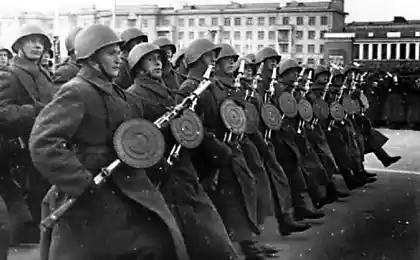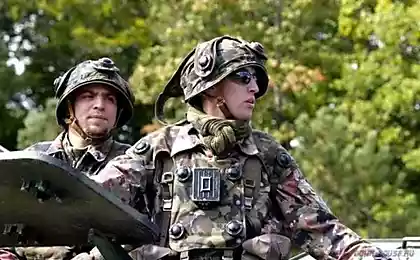756
Courage, brutality, tactics: 10 facts about the Assyrian army, bringing terror to the half of the world
About 3000 years ago the people that today few people remember, was a crushing footsteps through the middle East. The army compared the city to the ground, tortured survivors and sowed fear throughout the world. Talking about the Assyrians, the first country that made military power the basis of its policy and the first country that terrorized his enemies through psychological warfare. The website publishes the most interesting facts about the Assyrian army.

Photo source: Kulturologia.givena war Every Assyrian man — from the poorest to the richest, was obliged to serve in the army. It was the first country where military service was made compulsory for every citizen male, regardless of who he was. All men lived according to the principle of "3 years". In the first year they built roads, bridges and buildings, to increase the power of the Empire. In the second year they went to war. And only in the third year they were allowed to live with their families. As a result, Assyria had one of the strongest armies in the world. Moreover, it was well trained and in constant battle... and there were many.
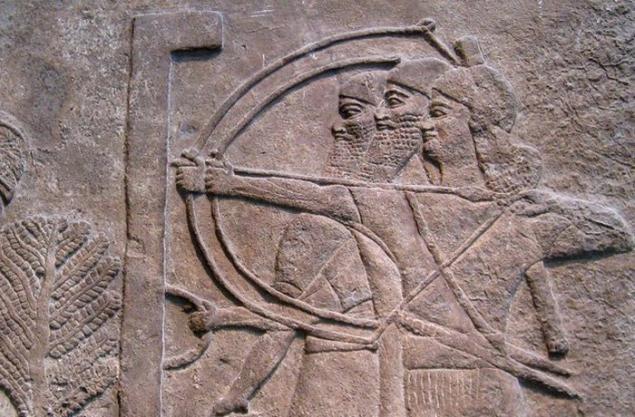
Psychological terror, the Assyrians had created the signs, on which he drew and described the process of torture of his enemies, to the next town knew what was going to happen to his defenders. On these tablets was shown the process of skinning people alive, gouging their eyes and planting them on stakes. After one of the Assyrian kings of ashurnasirpal II left a number of similar signs, which was described by his atrocities in the capture of the cities: "I flayed all the defenders of the city and hung it on the walls... I burned all the children... of the heads of the inhabitants before the city was built the tower." By that time, as the Assyrian army approached the walls of another town, its residents already knew what to expect.

A chance to surrender Before the battle people were often given a chance to surrender. The city wall went the envoy, who promised the defenders of the city (which was already shaking in fear because he knew what awaits them) that if they will surrender and will pay tribute to Assyria, they will be allowed to live, "Humble yourselves and come out to me! Then each of you will have your own grapes and fruits of Fig tree and drink water from your pond. And for those who will not, will have to eat their own excrement and drink their own urine." Many countries surrendered and paid tribute to Assyria, whose troops went on.

Siege weapons At that time there was practically no siege guns. At best the army could hope to break through the gates of the city, trying to dislodge their log, often while on them from the walls shot archers. The Assyrians, however, invented some of the first guns in the world. For example, they invented the battering RAM device that seemed unstoppable at the time. It was a complex structure on wheels, inside of which was a huge beam with an iron tip in the form of a RAM's head, which swayed on the chains, allowing you to blast through enemy walls. People inside the structure, which rocked the plank, was protected by wooden planks covered with raw skins of animals, which sank and rotten lighted arrows of the defenders of the city.
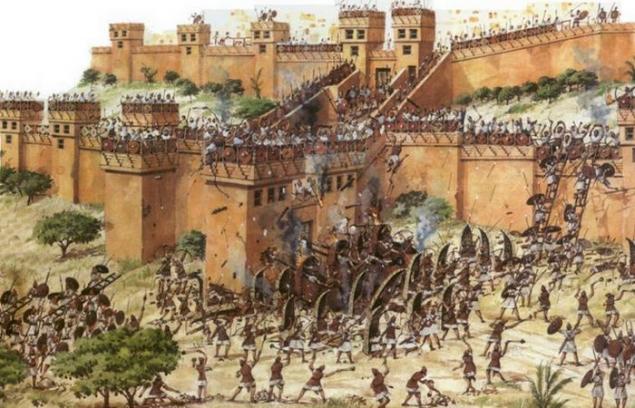
The complete destruction of cities and Sometimes the Assyrian army did not stop at murdering their enemies. When the Assyrian king Senacherib invaded Babylon, he wiped it from the face of the earth. All that is left behind him, it was a boastful statement: "the city and its houses, from Foundation to roof I looted, destroyed and burned with fire... in the middle of the city I dug canals and flooded it with water. On the site of Babylon left only the swamp."

Torture survivors According to surviving records, one Assyrian king had spared some of the people captured cities: "to know and the elders of the city came to me to save their lives... they fell at my feet and asked for mercy, asking him to do anything but kill." Most often, these survivors used to intimidate others, and quite a brutal way — they cut off the noses and ears. And one of the kings, Asarhaddon made to know they captured the town wearing a "necklace" with the severed heads of their rulers.

The life of slaves In the Assyrian wall paintings preserved image of slaves chained to large rocks that they were forced to pull like mules. These stones are used for building palaces and the other marvels of architecture to the kings and slaves who dragged them to the construction site, could not even rest (rear were the guards who beat anyone who "Skive"). With the same women that were taken into slavery, often acted even worse. They are often stripped naked to humiliate and make me feel helpless.

Immigration policy In Assyria was the policy of permanent relocation of people — entire families expelled from their homes and resettled them throughout the country. It was one of the reasons that made the Assyrians so powerful. Craftsmen from conquered countries were resettled in the heart of the Empire, where they were sent to the construction site of palaces, temples and wonders. Often they were allowed to bring their families with them. Dangerous enemies who fought against Assyria were sometimes given a chance to redeem himself. If the king was merciful, he sent them to the restoration of the conquered country.
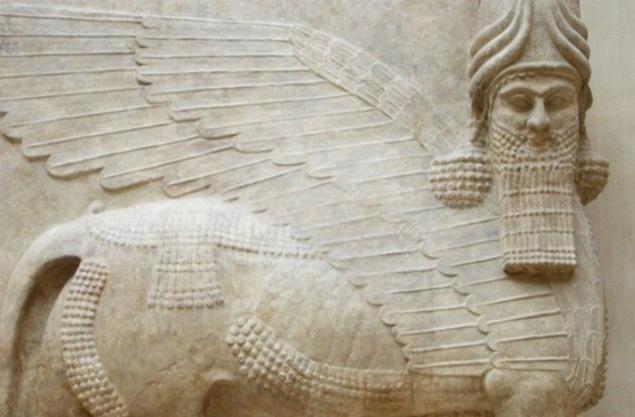
A code of laws, Many of the crimes in Assyria was punished by mutilation or death. If someone kissed the other man's wife, he cut off his lower lip with an axe. If a man was "caught" with another man, then he was turned into a eunuch. Adultery was punishable by death. Men had the right to kill wives who were caught in adultery. The murderers were conveyed to the family of the victim, who was free to do with them what you will.
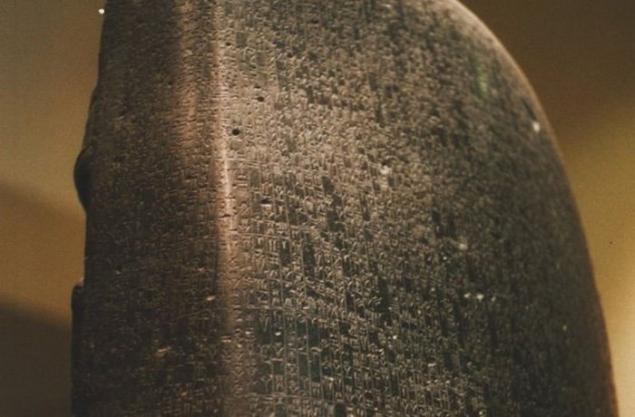
Post-traumatic stress disorder, Life in Assyria was terrifying not only for the potential victims of the Assyrians, but also for themselves. The soldiers of the Assyrian army were observed symptoms of what modern psychologists call post traumatic stress. They heard and saw ghosts of people who died in the battle, and talked to them. Scientists believe that the warriors felt a sense of guilt for the murder and torture of innocent people.

via www.kulturologia.ru/blogs/131216/32596/

Photo source: Kulturologia.givena war Every Assyrian man — from the poorest to the richest, was obliged to serve in the army. It was the first country where military service was made compulsory for every citizen male, regardless of who he was. All men lived according to the principle of "3 years". In the first year they built roads, bridges and buildings, to increase the power of the Empire. In the second year they went to war. And only in the third year they were allowed to live with their families. As a result, Assyria had one of the strongest armies in the world. Moreover, it was well trained and in constant battle... and there were many.

Psychological terror, the Assyrians had created the signs, on which he drew and described the process of torture of his enemies, to the next town knew what was going to happen to his defenders. On these tablets was shown the process of skinning people alive, gouging their eyes and planting them on stakes. After one of the Assyrian kings of ashurnasirpal II left a number of similar signs, which was described by his atrocities in the capture of the cities: "I flayed all the defenders of the city and hung it on the walls... I burned all the children... of the heads of the inhabitants before the city was built the tower." By that time, as the Assyrian army approached the walls of another town, its residents already knew what to expect.

A chance to surrender Before the battle people were often given a chance to surrender. The city wall went the envoy, who promised the defenders of the city (which was already shaking in fear because he knew what awaits them) that if they will surrender and will pay tribute to Assyria, they will be allowed to live, "Humble yourselves and come out to me! Then each of you will have your own grapes and fruits of Fig tree and drink water from your pond. And for those who will not, will have to eat their own excrement and drink their own urine." Many countries surrendered and paid tribute to Assyria, whose troops went on.

Siege weapons At that time there was practically no siege guns. At best the army could hope to break through the gates of the city, trying to dislodge their log, often while on them from the walls shot archers. The Assyrians, however, invented some of the first guns in the world. For example, they invented the battering RAM device that seemed unstoppable at the time. It was a complex structure on wheels, inside of which was a huge beam with an iron tip in the form of a RAM's head, which swayed on the chains, allowing you to blast through enemy walls. People inside the structure, which rocked the plank, was protected by wooden planks covered with raw skins of animals, which sank and rotten lighted arrows of the defenders of the city.

The complete destruction of cities and Sometimes the Assyrian army did not stop at murdering their enemies. When the Assyrian king Senacherib invaded Babylon, he wiped it from the face of the earth. All that is left behind him, it was a boastful statement: "the city and its houses, from Foundation to roof I looted, destroyed and burned with fire... in the middle of the city I dug canals and flooded it with water. On the site of Babylon left only the swamp."

Torture survivors According to surviving records, one Assyrian king had spared some of the people captured cities: "to know and the elders of the city came to me to save their lives... they fell at my feet and asked for mercy, asking him to do anything but kill." Most often, these survivors used to intimidate others, and quite a brutal way — they cut off the noses and ears. And one of the kings, Asarhaddon made to know they captured the town wearing a "necklace" with the severed heads of their rulers.

The life of slaves In the Assyrian wall paintings preserved image of slaves chained to large rocks that they were forced to pull like mules. These stones are used for building palaces and the other marvels of architecture to the kings and slaves who dragged them to the construction site, could not even rest (rear were the guards who beat anyone who "Skive"). With the same women that were taken into slavery, often acted even worse. They are often stripped naked to humiliate and make me feel helpless.

Immigration policy In Assyria was the policy of permanent relocation of people — entire families expelled from their homes and resettled them throughout the country. It was one of the reasons that made the Assyrians so powerful. Craftsmen from conquered countries were resettled in the heart of the Empire, where they were sent to the construction site of palaces, temples and wonders. Often they were allowed to bring their families with them. Dangerous enemies who fought against Assyria were sometimes given a chance to redeem himself. If the king was merciful, he sent them to the restoration of the conquered country.

A code of laws, Many of the crimes in Assyria was punished by mutilation or death. If someone kissed the other man's wife, he cut off his lower lip with an axe. If a man was "caught" with another man, then he was turned into a eunuch. Adultery was punishable by death. Men had the right to kill wives who were caught in adultery. The murderers were conveyed to the family of the victim, who was free to do with them what you will.

Post-traumatic stress disorder, Life in Assyria was terrifying not only for the potential victims of the Assyrians, but also for themselves. The soldiers of the Assyrian army were observed symptoms of what modern psychologists call post traumatic stress. They heard and saw ghosts of people who died in the battle, and talked to them. Scientists believe that the warriors felt a sense of guilt for the murder and torture of innocent people.

via www.kulturologia.ru/blogs/131216/32596/
The mad king: a puzzle whose solution is not within everyone!
"If you're in the UK, speak fluently": indiscretion this Brit is simply amazing
